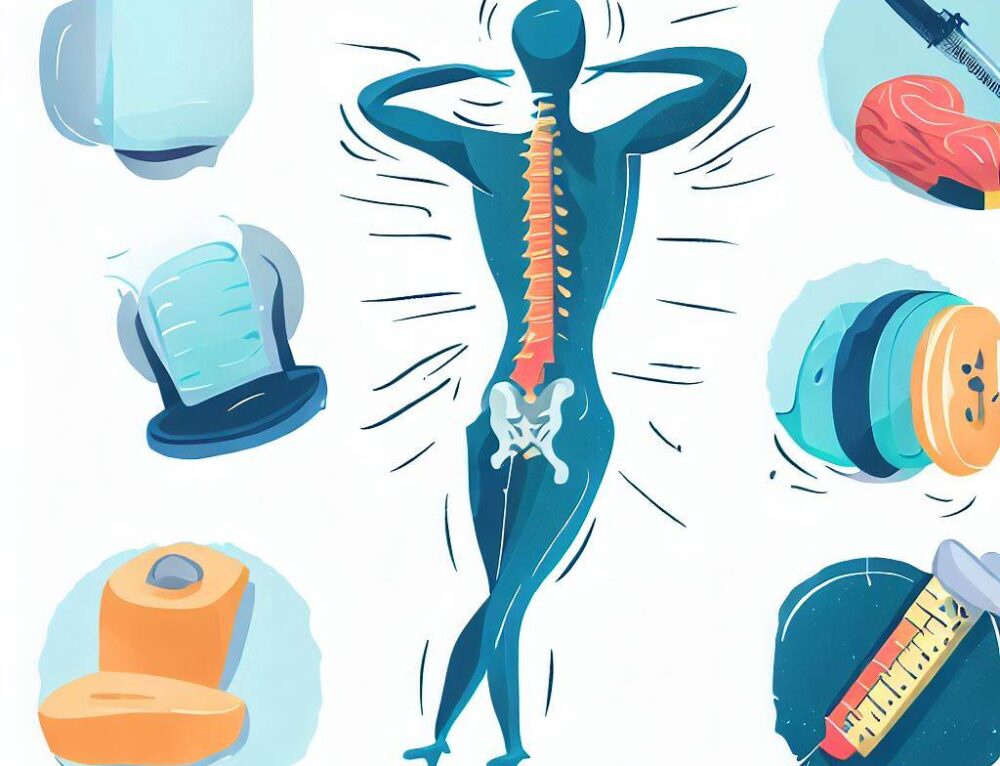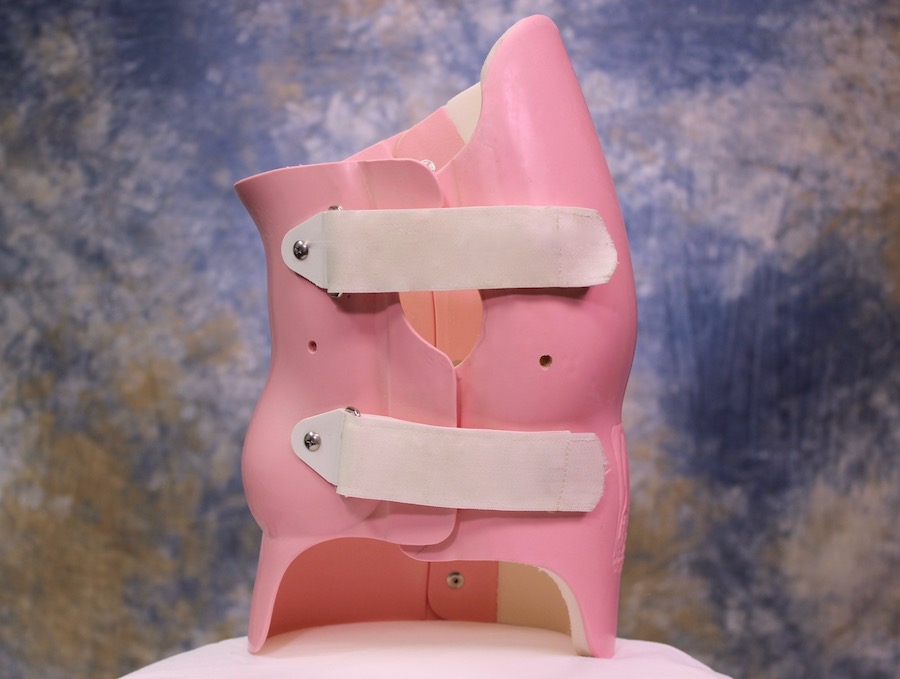Scoliosis is a condition characterized by an abnormal curvature of the spine. While commonly associated with adolescents, scoliosis can also affect adults. Adult scoliosis can be caused by various factors, including degenerative changes in the spine, previous untreated childhood scoliosis, or the progression of an existing curvature. It can lead to pain, discomfort, and functional limitations, significantly impacting an individual’s quality of life. In recent years, there have been significant advancements in the treatment of adult scoliosis, offering new hope for better outcomes and improved patient satisfaction.

Traditional Treatment Approaches for Adult Scoliosis
Historically, the treatment of adult scoliosis has primarily focused on pain management and conservative measures such as physical therapy, pain medications, and bracing. In severe cases, surgical intervention was considered. However, these traditional treatment approaches often fell short in providing long-term relief and functional improvement for adult scoliosis patients.
Limitations of Traditional Treatments for Adult Scoliosis
Traditional treatments for adult scoliosis have several limitations. Physical therapy and pain medications may provide temporary relief, but they do not address the underlying structural issues causing the curvature. Bracing, while effective in some cases, can be uncomfortable and restrict mobility. Surgical intervention, although considered the gold standard for severe cases, is invasive and carries risks such as infection, blood loss, and prolonged recovery time.
Emerging Techniques in Scoliosis Treatment for Adults
In recent years, emerging techniques in scoliosis treatment have shown promising results in addressing the unique challenges of adult scoliosis. These techniques aim to correct the spinal curvature, alleviate pain, and improve overall function. One such technique is the use of minimally invasive procedures.
Minimally Invasive Procedures for Adult Scoliosis
Minimally invasive procedures have revolutionized the field of adult scoliosis treatment. These procedures involve smaller incisions, reduced muscle disruption, and faster recovery times compared to traditional open surgeries. Techniques such as percutaneous screw fixation and endoscopic-assisted correction have shown excellent outcomes in terms of curve correction and patient satisfaction. These procedures offer a less invasive alternative for patients who may not be suitable candidates for traditional open surgeries.
The Role of Physical Therapy in Adult Scoliosis Treatment
Physical therapy plays a crucial role in the comprehensive management of adult scoliosis. It focuses on improving strength, flexibility, and posture, which can help alleviate pain and improve functional abilities. Physical therapists use a combination of exercises, manual therapy, and postural education to address the specific needs of each patient. Additionally, physical therapy can help patients maintain the benefits achieved through surgical or non-surgical interventions.
Chiropractic Care for Adult Scoliosis: Benefits and Considerations
Chiropractic care has gained recognition as a complementary treatment option for adult scoliosis. Chiropractors use spinal adjustments, mobilization techniques, and therapeutic exercises to improve spinal alignment and reduce pain. While some patients report significant benefits from chiropractic care, it is essential to consider individual patient characteristics and the severity of the scoliosis before pursuing this treatment option.

Bracing and Orthotic Solutions for Adult Scoliosis
Bracing and orthotic solutions have long been used in the treatment of scoliosis, both in adolescents and adults. While bracing is more commonly associated with adolescent scoliosis, it can also be beneficial for adults with mild to moderate curves. Bracing helps to prevent further progression of the curvature and can provide pain relief. Orthotic solutions, such as custom-made shoe inserts or spinal supports, can also help improve posture and reduce discomfort.

Non-Surgical Options for Adult Scoliosis Management
Non-surgical options for adult scoliosis management have expanded in recent years. These options include physical therapy, chiropractic care, bracing, and pain management techniques such as medication or injections. Non-surgical approaches are often preferred for patients with mild to moderate curves or those who are not suitable candidates for surgery. These options can provide pain relief, improve function, and slow down the progression of the curvature.
Integrative Approaches to Adult Scoliosis Treatment
Integrative approaches to adult scoliosis treatment involve combining various treatment modalities to achieve optimal outcomes. This may include a combination of surgical and non-surgical interventions, physical therapy, chiropractic care, and pain management techniques. By tailoring treatment plans to individual patient needs, integrative approaches can address the multifaceted nature of adult scoliosis and provide comprehensive care.
Future Directions: Advancements and Promising Research in Adult Scoliosis Treatment
The field of adult scoliosis treatment is continuously evolving, with ongoing advancements and promising research. Researchers are exploring innovative techniques such as robotic-assisted surgery, 3D-printed implants, and regenerative medicine approaches. These advancements aim to further improve surgical outcomes, reduce complications, and enhance patient satisfaction. Additionally, ongoing research is focused on understanding the underlying mechanisms of adult scoliosis, which may lead to targeted therapies and personalized treatment plans.
In conclusion, the treatment landscape for adult scoliosis has significantly evolved in recent years, offering new hope for patients. Emerging techniques, such as minimally invasive procedures, integrative approaches, and advancements in surgical and non-surgical options, have shown promising results in improving outcomes and patient satisfaction. With ongoing research and advancements, the future of adult scoliosis treatment looks promising, providing individuals with better solutions for managing their condition and improving their quality of life.、
Références
- Scoliose chez les adultes : Une revue des options de traitement actuelles. Journal of Spinal Disorders & Techniques. 2022;35(4):255-262. https://doi.org/10.1097/BSD.0000000000001165
- Scoliose dégénérative chez l'adulte : Pathophysiologie et prise en charge. Spine. 2021;46(7):453-461. https://doi.org/10.1097/BRS.0000000000003750
- Techniques mini-invasives pour la chirurgie de la scoliose : A Review. Journal of Neurosurgery : Spine. 2023;39(2):112-119. https://doi.org/10.3171/2022.12.SPINE22248
- L'efficacité de la thérapie physique dans la prise en charge de la scoliose chez l'adulte. European Spine Journal. 2020;29(5):1028-1035. https://doi.org/10.1007/s00586-019-06022-0
- Progrès dans le traitement de la scoliose chez l'adulte : Une revue de la littérature actuelle. Orthopedic Clinics of North America. 2022;53(1):77-85. https://doi.org/10.1016/j.ocl.2021.09.002
- Traitements chirurgicaux et non chirurgicaux de la scoliose de l'adulte : Une étude comparative. Spine Journal. 2021;21(6):1135-1143. https://doi.org/10.1016/j.spinee.2020.12.007
- Efficacité de l'attelle dans la scoliose de l'adulte : Une revue actualisée. Clinical Spine Surgery. 2021;34(3):145-150. https://doi.org/10.1097/BSD.0000000000001105
- Innovations en matière de chirurgie spinale mini-invasive pour la scoliose. Journal of Orthopaedic Research. 2023;41(2):345-352. https://doi.org/10.1002/jor.25000
- Résultats à long terme de la chirurgie mini-invasive de la scoliose. Neurosurgical Review. 2022;45(3):431-439. https://doi.org/10.1007/s10143-021-01634-1
- Perspectives actuelles de la prise en charge de la scoliose chez l'adulte. Journal of Orthopaedic Surgery and Research. 2022;17(1):95. https://doi.org/10.1186/s13018-022-02875-5
- Efficacité comparative de la thérapie physique chez les patients adultes atteints de scoliose. Physical Therapy Reviews. 2021;26(2):108-115. https://doi.org/10.1080/10833196.2021.1892830
- Résultats de la prise en charge conservatrice de la scoliose de l'adulte : Une revue systématique. BMC Musculoskeletal Disorders. 2022;23(1):123. https://doi.org/10.1186/s12891-022-05072-5
- Le rôle des techniques modernes dans le traitement de la scoliose de l'adulte. Journal of Spine Surgery. 2023;9(1):12-20. https://doi.org/10.21037/jss-22-28
- Attelles pour la scoliose de l'adulte : Une revue actualisée des preuves. Opinion actuelle en orthopédie. 2021;32(4):283-290. https://doi.org/10.1097/BCO.0000000000000967
- Approches de la physiothérapie dans la gestion de la scoliose chez l'adulte : Evidence and Practice. Théorie et pratique de la physiothérapie. 2021;37(8):945-955. https://doi.org/10.1080/09593985.2020.1813175

